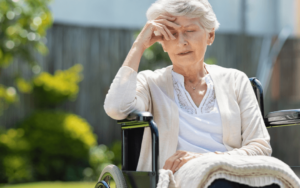 Chronic pain is a common issue among elderly patients, and it can significantly reduce their quality of life. Pain management in elderly patients is a complex process that requires a comprehensive approach to address the root cause of the pain. The following sections will explore the complexities of pain management in elderly patients, the importance of comprehensive pain assessments, common barriers to effective pain management, and the importance of communicating with elderly patients about pain and treatment options.
Chronic pain is a common issue among elderly patients, and it can significantly reduce their quality of life. Pain management in elderly patients is a complex process that requires a comprehensive approach to address the root cause of the pain. The following sections will explore the complexities of pain management in elderly patients, the importance of comprehensive pain assessments, common barriers to effective pain management, and the importance of communicating with elderly patients about pain and treatment options.
Understanding the Complexities of Pain Management in Elderly Patients
Pain in elderly patients can stem from a variety of causes, such as arthritis, cancer, or neuropathy. Chronic pain can affect not only physical health but also emotional and mental well-being. However, older patients may be hesitant to report their pain because they fear that it is a natural part of aging, or they may worry about the side effects of pain medications.
The Importance of Comprehensive Pain Assessments for Elderly
Patients comprehensive pain assessments are essential for elderly patients because they allow healthcare providers to identify the root cause of the pain and develop a personalized pain management plan. Pain assessments should consider the patient’s medical history, current medications, and pain characteristics, such as location, intensity, and duration.
Addressing Common Barriers to Effective Pain Management in Elderly Patients
Effective pain management in elderly patients can be challenging due to several barriers. For instance, patients may be on multiple medications that can interact with pain medications, making it difficult to manage pain effectively. Additionally, age-related changes in the body can alter the absorption and metabolism of medications, requiring adjustments in dosage or medication type.
Communicating with Elderly Patients about Pain and Treatment Options
Effective communication is essential to ensure that elderly patients receive the appropriate pain management. Healthcare providers should ask open-ended questions and listen carefully to the patient’s responses. Patients should be informed about their treatment options, including non-pharmacological approaches, such as physical therapy or relaxation techniques. Patients should also be informed about the risks and benefits of pain medications and the potential side effects.
Managing chronic pain in elderly patients requires a comprehensive approach that addresses the root cause of the pain. Healthcare providers must conduct comprehensive pain assessments, address common barriers to effective pain management, and communicate effectively with patients about their pain and treatment options. If you or a loved one are struggling with chronic pain, contact Aurora Home Health for skilled nursing services which can help manage pain if necessary.
